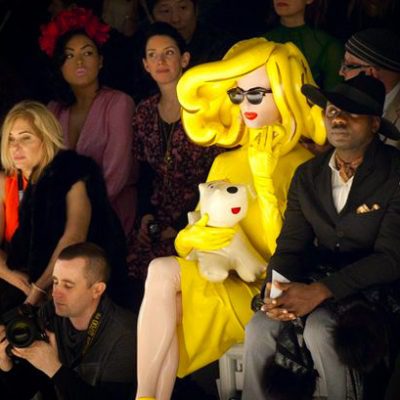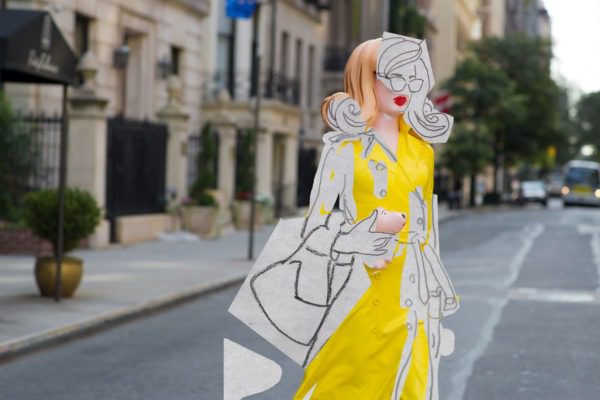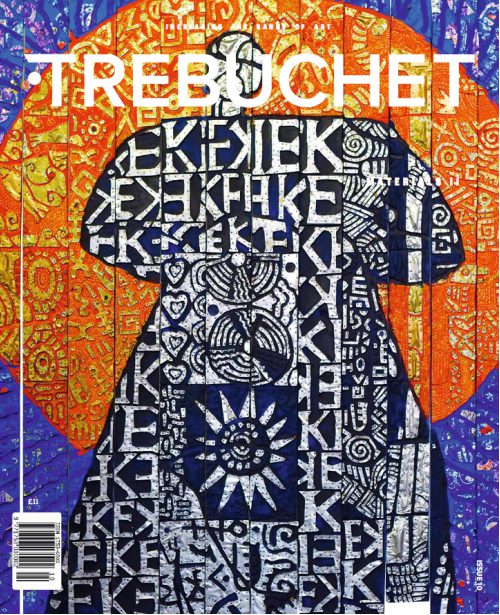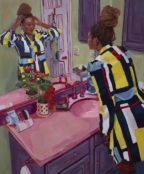The social experiences of the world are defined by physical boundaries, human limits and the isolation of good judgement. As consciousness becomes ever more plugged in, physical boundaries collapse and fold in on themselves. Our lives are now arranged and conducted digitally. Branding and personal identity are intertwining to create a fluid collective amalgam. Out of this mélange, it is not surprising that virtualisation and digital art has taken a larger role in our artistic lives. Could the new twenty-first century era be defined by portability as digital nomads take their art with them, art which reflects and revels in this nomadism?
Digital art has been around since the 1960s as a form of art that has challenged the primacy of the brush, chisel and pen. But in the end it is just another novel tool at the artist’s disposal. What the pandemic, social media and networked culture have given us is rapidity and mass consumptive amnesia. Our moveable feast is now fast food and the examples of Matthew Stone, Oscar Pettersson and Andreas Wannerstedt reflect both the maturity of digital production and the voracious appetites of generation Instagram.
Stone’s digital print on linen Dream (2019), is pared down to an animated paint stroke. His use of the expressionist device separates it from its original meaning and turns it into an oscillating chimaera. It connects the history of art with the new edges of technology, unknowingly. Even more arch is Oscar Pettersson’s Cactus Cuddle, a well-executed visual oxymoron, a typical example of attention-grabbing social media art. But it is Wannerstedt’s The Maze (2021) that exemplifies the hypnotic multidisciplinary potential of digital virtualisation where art becomes a kinetic ASMR (autonomous sensory meridian response) visual sensation.

Exciting stuff no doubt, but what are the dangers of our new social method? The Instagram delivery model reduces art to the one-second advert before we flick away to an ever-increasing overload of imagery. Art’s race with advertising, reduced to comparisons about slogan and the direct message, seems to be reaching its conclusion. Fine art will withdraw to its white-cube salons whereas pop art will unashamedly declare itself indistinguishable from advertising, not winning but not coming last. In this new rapid world of high-concept vapidity, would Gainsborough get a look in?
As a new medium, the current deluge of eye-popping teen art, cartoon characters and sci-fi will surely mature as people scope out the new medium’s potential but in the meantime we’ll have to suffer the sugar rush of speculation over non-fungible art tokens. Content which stands in for art in art’s absence.
Will the potential of the hyper-sensational, one second artwork be realised? And by whom? Stone’s Dream and Wannerstedt’s The Maze seek to reassure us of that whilst keeping our attention glued to the surface, a hypnotic feast that would have satisfied even a Lotus-eater. Or is there more going on under the surface, in the over-simplistic embrace of the Insta format? Are these works gently pointing to the gilded cage that surrounds us all?
Aside from content, digital art in the form of NFTs (non-fungible tokens) offer incredible potential for artists such as out-of-the-box publishing, the percentage of future sales and monetising non-traditional art forms. However, as more money is involved, the burgeoning digital art market will probably be taken over by software companies developing ever more spectacular algorithms akin to the Hollywood blockbuster special-effects films. Backed by brainwave-mapped psychological profiles and giga-terabytes of market data, the corporation subsumes the individual. Deliciously reduced through collective data to our base needs, we eat the hamburger not fully wishing it were a ‘proper’ meal.
In traditional hand-made works of art, the plasmodial threads of the artist’s life are embedded into the tear-worn brushstrokes and sweat-stroked clay. A trace of their time and experience lingers on—it carries the lingering imperfection of transient human experience; there is no undo, this is it!
Our time is finite. Hypothetically, digital work can live on and become immortal through endless reproduction, and the colours won’t fade. Which reminds me of our analogue record collections. Did anybody ever show off their mp3 collection? Is digital art going to be the new mp3, where we all look and not pay?

When considering that our experiences are mediated through the senses and transported to our brains electrically through our nerve endings, we must admit that most art we have seen is viewed electronically or through printed reproductions. Maybe the ideas are sovereign and the obsession with the physical is merely romanticism. But where is the lasting value?
Can you buy a house with an NFT? Apparently yes, with the movement of value from NFTs to the real world. Will NFT art contain and continue? Will it live in a Mexican standoff of wait-and-see run by speculators? It comes down to power; if the gravitational force of wealth and connections wills it into existence, public consciousness will shift and accept it. Money has been virtual since Nixon dropped the gold standard in 1971 and we all have faith in that—well, most of the time. Art and Illusion have always gone hand in hand.





















